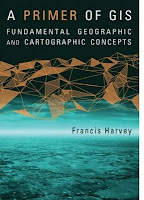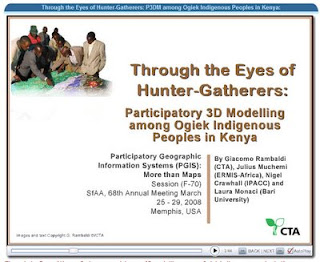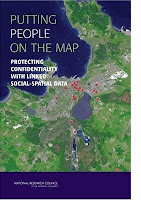On 21 and 22 April 2008,
CTA hosted a “Curriculum Development Workshop” as part of the project known as “Support the spread of good practice in generating, managing, analysing and communication spatial information”. The event brought together 35 people from different continents (Africa, Asia, Latin America, Northern America and Europe), all sharing a solid experience in participatory mapping and communication. The aim of the workshop was to kick-start the process which would lead to the production of a multilingual, multimedia and modular training kit on ‘Participatory Spatial Information Management and Communication”.
The output of the initiative is intended to increase the capacity of indigenous and other marginalised peoples to engage in effective policy dialogue and advocacy on issues related to the territory. Skills acquired through the deployment of the kit would ensure that indigenous and other marginalised communities are more effective in documenting, representing and communicating their spatial knowledge, while taking a high degree of control over the processes. The initiative is co-funded by CTA and
IFAD. Development partners which committed additional resources to the project include the Indigenous Peoples of Africa Coordinating Committee (
IPACC); International Institute for Geo-Information Science and Earth Observation (
ITC), the University of British Columbia, Okanagan (UBC),
UNOSAT and the Ford Foundation Brazil.
The direct beneficiaries of the project are technology intermediaries working in multidisciplinary teams and operating within institutions or organisations already committed to practicing participatory mapping and who are or would be required to deliver training on the practice, or facilitate the process in the field. Ultimate beneficiaries will be adopters from community-based organisations, non-governmental organisations, research institutions, academia, multilateral and bilateral development agencies and other development actors.
The English version of the kit is expected to be available in 2009 followed by versions in other languages.





